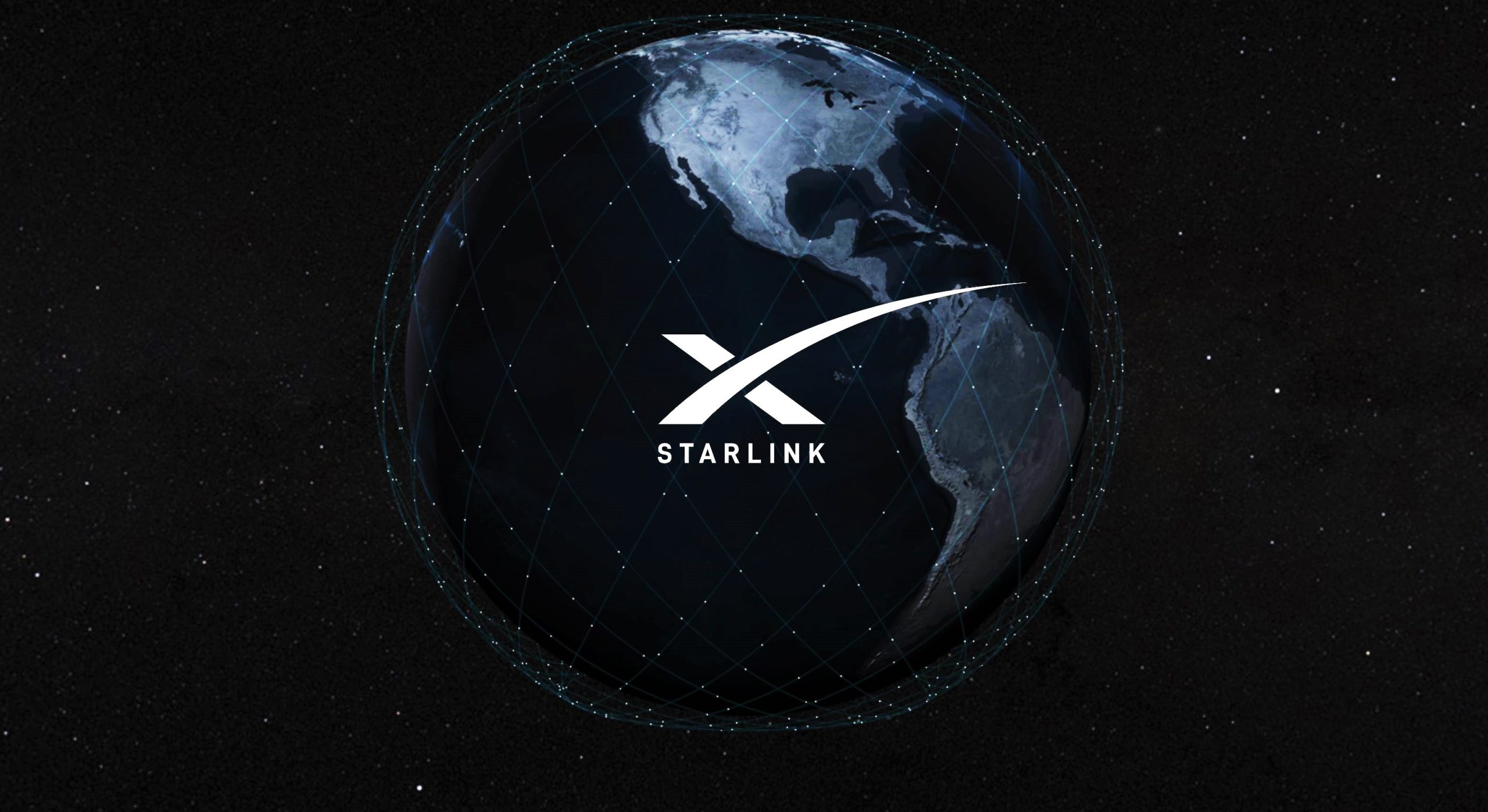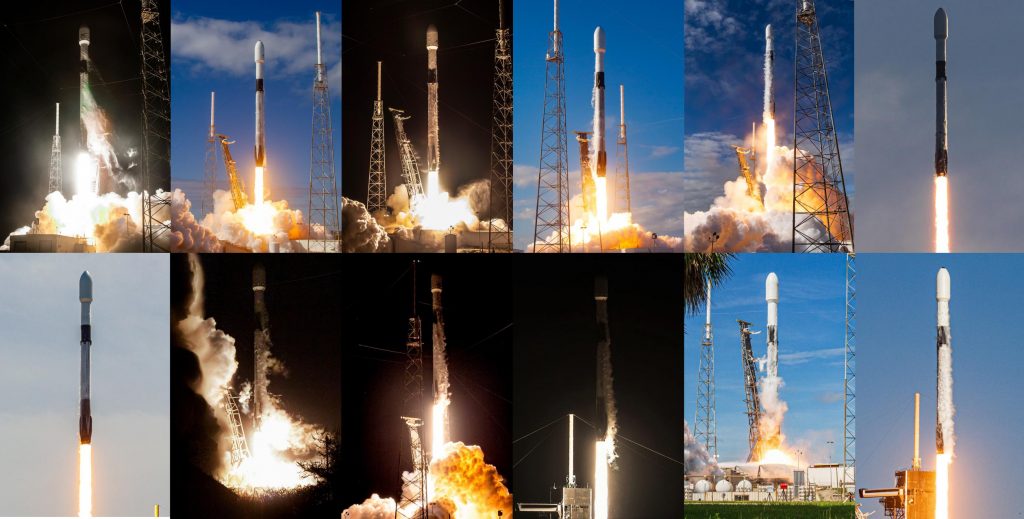

News
SpaceX Starlink partners with Microsoft Azure to deploy cloud computing anywhere
Microsoft Azure has announced a partnership with SpaceX that will give customers the ability to both access and deploy cloud computing capabilities anywhere on Earth with the help of Starlink internet.
Ultimately designed with anywhere from ~4,400 to ~40,000 operational satellites in mind, SpaceX’s Starlink constellation aims to connect users to the internet where existing access is either too expensive, limited, or completely unavailable. Of course, however, connecting the world’s unconnected is an immense and challenging aspiration – one that is unlikely to be one of the Starlink constellation’s first major uses.
As CEO Elon Musk has been keen to regularly note, the real challenge of SpaceX’s Starlink satellite internet project is ultimately ensuring that the constellation doesn’t join the graveyard of bankrupt companies that came before it. For better or worse, that will necessitate close relationships with as many premium enterprise-class customers as possible. With its estimated 2020 market cap of ~$370 billion expected to grow to ~$800 billion or more by 2025, cloud computing is one such potentially lucrative application.
To better exploit the benefits offered by the kind of blanket connectivity Starlink may soon offer, Microsoft has developed its own Azure Modular Datacenter (MDC), essentially a data center built into a mobile, satellite-connected shipping container. Customers can choose to either use the MDC as a wholly independent datacenter or connect it to one or more satellite constellations, Starlink included. With what a SpaceX executive recently described as dual parabolic antennas, an MDC could likely have access to gigabit-class internet connectivity with latency comparable to fiber anywhere on Earth.
According to Microsoft, possible scenarios where an MDC would be valuable include “mobile command centers, humanitarian assistance, military mission needs, mineral exploration, and other use cases requiring high intensity, secure computing.” Several Azure Mobile Datacenters have already been deployed and are being trialed by private sector companies and the US military.
Likely less than coincidental, Microsoft Azure’s Starlink partnership comes around the same time as Amazon has begun to peel back the curtains on Project Kuiper, a low Earth orbit (LEO) satellite internet constellation almost indistinguishable from Starlink. Lead and largely staffed by former Starlink executives and employees, Project Kuiper aims to deploy a constellation of ~3200 small, interlinked communications satellites – a goal Amazon has pledged at least $10 billion to achieve.
Somewhat unsurprisingly, Kuiper – lead by executives SpaceX CEO Elon Musk personally fired in 2019 for moving too slowly – has no set schedule or indication of early prototype development and is effectively 3-5 years behind SpaceX, OneWeb, and other prospective constellation operators from the get-go.

An IEEE Spectrum article offers an excellent summary of the web services. logistics, and online shopping giant’s most likely motivation behind investing so much money in a satellite constellation that is – at best – years behind.
“‘With Amazon, it’s a whole different ballgame,’ says Zac Manchester, an assistant professor of aeronautics and astronautics at Stanford University. ‘The thing that makes Amazon different from SpaceX and OneWeb is they have so much other stuff going for them.’ If Kuiper succeeds, Amazon can not only offer global satellite broadband access—it can include that access as part of its Amazon Web Services (AWS), which already offers resources for cloud computing, machine learning, data analytics, and more.”
Michael Koziol – IEEE Spectrum – 17 August 2020
In other words, Amazon likely believes that its potential advantages are so strong and so unmatched that it doesn’t matter if it’s years late to the party. On the other hand, it could also be the case that Amazon – and Amazon Web Services in particular – perceives a lack of the capabilities offered by a high-bandwidth satellite internet constellation to be such an existential threat that the company has no choice but to try to enter the fray.
As such, SpaceX’s partnership with Microsoft Azure Cloud Services is a direct shot across Amazon’s bow, demonstrating that even if Project Kuiper manages to begin operational satellite launches in just a year or two, the company will immediately face experienced, organized competition. There is some level of irony in the fact that, purely out of corporate spite, Amazon will now likely never become a Starlink customer to avoid helping a direct competitor, meaning that AWS will be consciously putting itself at a competitive disadvantage for years to come by waiting for Project Kuiper.

News
Tesla (TSLA) receives “Buy” rating and $551 PT from Canaccord Genuity
He also maintained a “Buy” rating for TSLA stock over the company’s improving long-term outlook, which is driven by autonomy and robotics.

Canaccord Genuity analyst George Gianarikas raised his Tesla (NASDAQ:TSLA) price target from $482 to $551. He also maintained a “Buy” rating for TSLA stock over the company’s improving long-term outlook, which is driven by autonomy and robotics.
The analyst’s updated note
Gianarikas lowered his 4Q25 delivery estimates but pointed to several positive factors in the Tesla story. He noted that EV adoption in emerging markets is gaining pace, and progress in FSD and the Robotaxi rollout in 2026 represent major upside drivers. Further progress in the Optimus program next year could also add more momentum for the electric vehicle maker.
“Overall, yes, 4Q25 delivery expectations are being revised lower. However, the reset in the US EV market is laying the groundwork for a more durable and attractive long-term demand environment.
“At the same time, EV penetration in emerging markets is accelerating, reinforcing Tesla’s potential multi‑year growth runway beyond the US. Global progress in FSD and the anticipated rollout of a larger robotaxi fleet in 2026 are increasingly important components of the Tesla equity story and could provide sentiment tailwinds,” the analyst wrote.
Tesla’s busy 2026
The upcoming year would be a busy one for Tesla, considering the company’s plans and targets. The autonomous two-seat Cybercab has been confirmed to start production sometime in Q2 2026, as per Elon Musk during the 2025 Annual Shareholder Meeting.
Apart from this, Tesla is also expected to unveil the next-generation Roadster on April 1, 2026. Tesla is also expected to start high-volume production of the Tesla Semi in Nevada next year.
Apart from vehicle launches, Tesla has expressed its intentions to significantly ramp the rollout of FSD to several regions worldwide, such as Europe. Plans are also underway to launch more Robotaxi networks in several more key areas across the United States.
News
Waymo sues Santa Monica over order to halt overnight charging sessions
In its complaint, Waymo argued that its self-driving cars’ operations do not constitute a public nuisance, and compliance with the city’s order would cause the company irreparable harm.

Waymo has filed a lawsuit against the City of Santa Monica in Los Angeles County Superior Court, seeking to block an order that requires the company to cease overnight charging at two facilities.
In its complaint, Waymo argued that its self-driving cars’ operations do not constitute a public nuisance, and compliance with the city’s order would cause the company irreparable harm.
Nuisance claims
As noted in a report from the Los Angeles Times, Waymo’s two charging sites at Euclid Street and Broadway have operated for about a year, supporting the company’s growing fleet with round-the-clock activity. Unfortunately, this has also resulted in residents in the area reportedly being unable to sleep due to incessant beeping from self-driving taxis that are moving in and out of the charging stations around the clock.
Frustrated residents have protested against the Waymos by blocking the vehicles’ paths, placing cones, and “stacking” cars to create backups. This has also resulted in multiple calls to the police.
Last month, the city issued an order to Waymo and its charging partner, Voltera, to cease overnight operations at the charging locations, stating that the self-driving vehicles’ activities at night were a public nuisance. A December 15 meeting yielded no agreement on mitigations like software rerouting. Waymo proposed changes, but the city reportedly insisted that nothing would satisfy the irate residents.
“We are disappointed that the City has chosen an adversarial path over a collaborative one. The City’s position has been to insist that no actions taken or proposed by Waymo would satisfy the complaining neighbors and therefore must be deemed insufficient,” a Waymo spokesperson stated.
Waymo pushes back
In its legal complaint, Waymo stated that its “activities at the Broadway Facilities do not constitute a public nuisance.” The company also noted that it “faces imminent and irreparable harm to its operations, employees, and customers” from the city’s order. The suit also stated that the city was fully aware that the Voltera charging sites would be operating around the clock to support Waymo’s self-driving taxis.
The company highlighted over one million trips in Santa Monica since launch, with more than 50,000 rides starting or ending there in November alone. Waymo also criticized the city for adopting a contentious strategy against businesses.
“The City of Santa Monica’s recent actions are inconsistent with its stated goal of attracting investment. At a time when the City faces a serious fiscal crisis, officials are choosing to obstruct properly permitted investment rather than fostering a ‘ready for business’ environment,” Waymo stated.
News
Tesla FSD v14.2.2 is getting rave reviews from drivers
So far, early testers have reported buttery-smooth drives with confident performance, even at night or on twisty roads.

Tesla Full Self-Driving (Supervised) v14.2.2 is receiving positive reviews from owners, with several drivers praising the build’s lack of hesitation during lane changes and its smoother decision-making, among others.
The update, which started rolling out on Monday, also adds features like dynamic arrival pin adjustment. So far, early testers have reported buttery-smooth drives with confident performance, even at night or on twisty roads.
Owners highlight major improvements
Longtime Tesla owner and FSD user @BLKMDL3 shared a detailed 10-hour impression of FSD v14.2.2, noting that the system exhibited “zero lane change hesitation” and “extremely refined” lane choices. He praised Mad Max mode’s performance, stellar parking in locations including ticket dispensers, and impressive canyon runs even in dark conditions.
Fellow FSD user Dan Burkland reported an hour of FSD v14.2.2’s nighttime driving with “zero hesitations” and “buttery smooth” confidence reminiscent of Robotaxi rides in areas such as Austin, Texas. Veteran FSD user Whole Mars Catalog also demonstrated voice navigation via Grok, while Tesla owner Devin Olsen completed a nearly two-hour drive with FSD v14.2.2 in heavy traffic and rain with strong performance.
Closer to unsupervised
FSD has been receiving rave reviews, even from Tesla’s competitors. Xpeng CEO He Xiaopeng, for one, offered fresh praise for FSD v14.2 after visiting Silicon Valley. Following extended test drives of Tesla vehicles running the latest FSD software, He stated that the system has made major strides, reinforcing his view that Tesla’s approach to autonomy is indeed the proper path towards autonomy.
According to He, Tesla’s FSD has evolved from a smooth Level 2 advanced driver assistance system into what he described as a “near-Level 4” experience in terms of capabilities. While acknowledging that areas of improvement are still present, the Xpeng CEO stated that FSD’s current iteration significantly surpasses last year’s capabilities. He also reiterated his belief that Tesla’s strategy of using the same autonomous software and hardware architecture across private vehicles and robotaxis is the right long-term approach, as it would allow users to bypass intermediate autonomy stages and move closer to Level 4 functionality.








